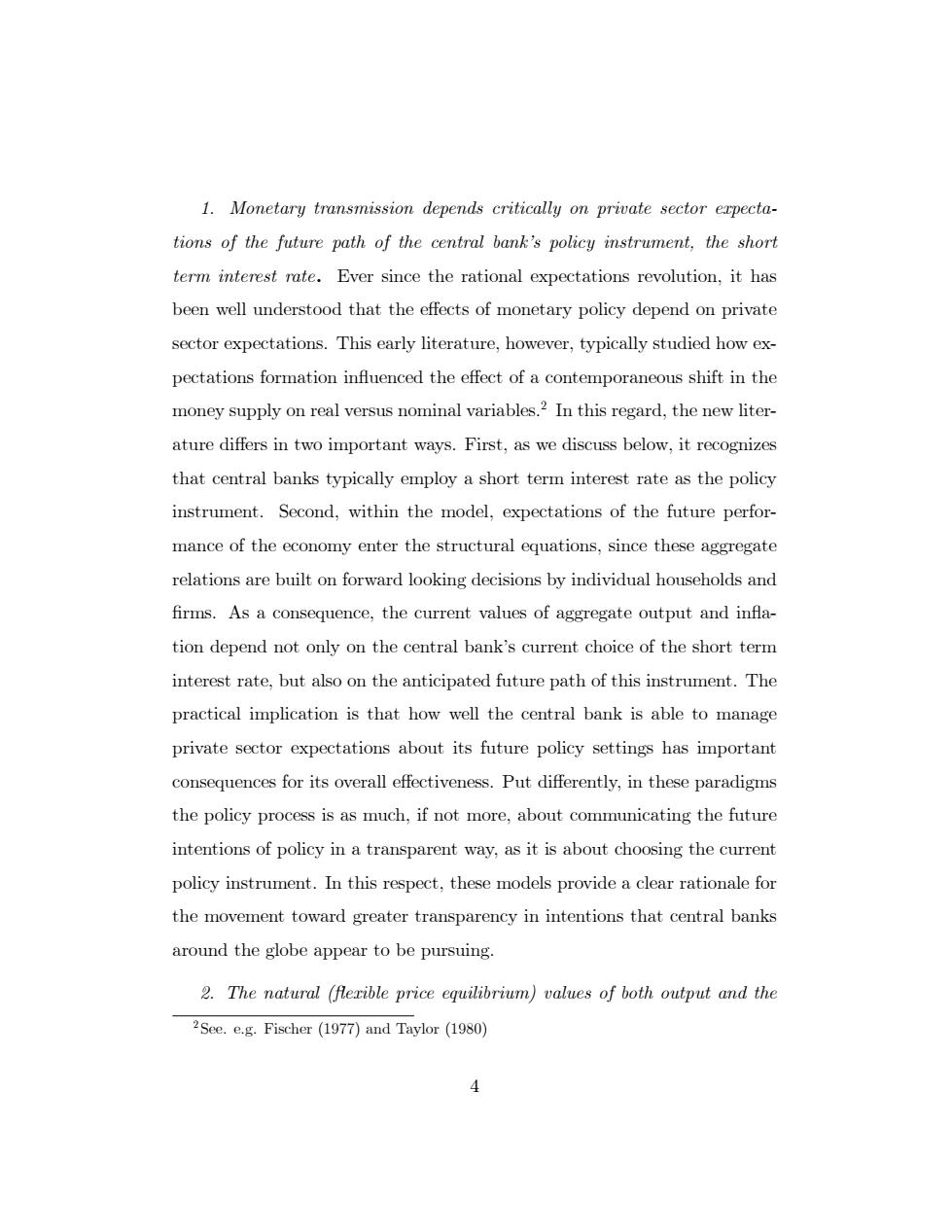正在加载图片...

1.Monetary transmission depends critically on private sector expecta- tions of the future path of the central bank's policy instrument,the short term interest rate.Ever since the rational expectations revolution,it has been well understood that the effects of monetary policy depend on private sector expectations.This early literature,however,typically studied how ex- pectations formation influenced the effect of a contemporaneous shift in the money supply on real versus nominal variables.2 In this regard,the new liter- ature differs in two important ways.First,as we discuss below,it recognizes that central banks typically employ a short term interest rate as the policy instrument.Second,within the model,expectations of the future perfor- mance of the economy enter the structural equations,since these aggregate relations are built on forward looking decisions by individual households and firms.As a consequence,the current values of aggregate output and infla- tion depend not only on the central bank's current choice of the short term interest rate,but also on the anticipated future path of this instrument.The practical implication is that how well the central bank is able to manage private sector expectations about its future policy settings has important consequences for its overall effectiveness.Put differently,in these paradigms the policy process is as much,if not more,about communicating the future intentions of policy in a transparent way,as it is about choosing the current policy instrument.In this respect,these models provide a clear rationale for the movement toward greater transparency in intentions that central banks around the globe appear to be pursuing 2.The natural (flerible price equilibrium)values of both output and the 2See.e.g.Fischer(1977)and Taylor (1980)1. Monetary transmission depends critically on private sector expectations of the future path of the central bankís policy instrument, the short term interest rate. Ever since the rational expectations revolution, it has been well understood that the e§ects of monetary policy depend on private sector expectations. This early literature, however, typically studied how expectations formation ináuenced the e§ect of a contemporaneous shift in the money supply on real versus nominal variables.2 In this regard, the new literature di§ers in two important ways. First, as we discuss below, it recognizes that central banks typically employ a short term interest rate as the policy instrument. Second, within the model, expectations of the future performance of the economy enter the structural equations, since these aggregate relations are built on forward looking decisions by individual households and Örms. As a consequence, the current values of aggregate output and ináation depend not only on the central bankís current choice of the short term interest rate, but also on the anticipated future path of this instrument. The practical implication is that how well the central bank is able to manage private sector expectations about its future policy settings has important consequences for its overall e§ectiveness. Put di§erently, in these paradigms the policy process is as much, if not more, about communicating the future intentions of policy in a transparent way, as it is about choosing the current policy instrument. In this respect, these models provide a clear rationale for the movement toward greater transparency in intentions that central banks around the globe appear to be pursuing. 2. The natural (áexible price equilibrium) values of both output and the 2See. e.g. Fischer (1977) and Taylor (1980) 4